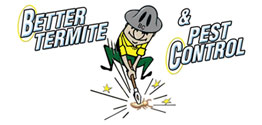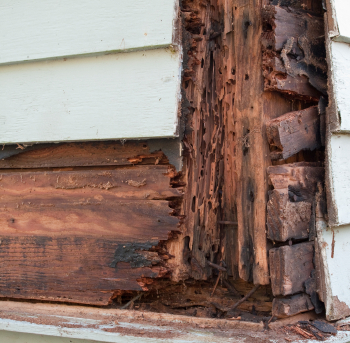Termites are a perennial problem for homeowners, silently degrading the structural integrity of our residences without so much as a peep. The cost of termite damage runs into billions worldwide, and it’s one issue where prevention certainly outweighs the cure. In this comprehensive guide, we’ll delve into the world of termites, their destructive capabilities, and the best strategies to keep these “silent killers” at bay.
Understanding the Termite: More Than Just a House Pest
Termites, often called ‘white ants’ due to their pale color and size, differ significantly from ants. They belong to the order Isoptera, distinctly classified close to cockroaches rather than ants. These social insects feed on dead plant material, which, when found in your household, is often the cellulose in wooden structures. There are various types of termites, but for homeowners, the distinction usually lies between subterranean, dampwood, and drywood termites. Each species has different preferences in terms of habitat and feeds on different health threats.
Termites in Your Timbers: The Destructive Nature of Dampwood and Drywood Varieties
Drywood and dampwood termites differ significantly in their preferred habitat and ability to cause damage. Drywood termites typically infest structures directly rather than the soil and need less moisture than their dampwood counterparts. Conversely, dampwood termites have higher moisture needs, which means they are often found in areas with water leaks or condensation issues. Both can be equally destructive, but understanding their preferences can offer clues to their presence and the extent of potential damage.
The Subterranean Scourge: Silent Workers Beneath Your Feet
Of all types, subterranean termites are the most destructive. These are event more silent, live underground and run from their mound to your foundation silently affecting your home. They are found in every U.S. state except Alaska and can wreak havoc on a house’s foundation and other wooden structures.
Recognizing Termite Damage: Visible Clues in Your Home
Identifying a termite infestation early can spell the difference between a minor inconvenience and severe structural harm. Knowing what signs to look for is crucial, so let’s explore the most common indicators of a termite presence.
The Often-Overlooked Warnings: Tunnels, Tubes, and Tapping
One of the most telltale signs of termites at work is the presence of mud tubes or tunnels along the exterior of your home. These structures provide termites with above-ground access to food sources and can suggest an ongoing infestation.
The Ear to the Ground: Auditory Cues of Termite Activity
In some cases, the termites’ activity can be detected by tap-testing the wood around suspected areas. If it sounds hollow, it could very well be indicative of termite damage within the structure. However, this method is not always accurate and should be used in conjunction with other signs.
The Aftermath of Termite Feasting: Evidence in the Debris
Termites will leave behind evidence of their eating habits; this could be in the form of small piles of sawdust-like materials or frass. These detritus remnants are a byproduct of their wood consumption and indicate that nearby wood is no longer stable.
Professional Protection: Why Call in the Experts?
While DIY methods exist and can be somewhat effective for early detection, professional termite control services offer a comprehensive solution that can protect your home from an infestation, or deal with one that’s already taken hold.
Early Detection and Prevention: The Role of Routine Inspections
Professional termite inspectors are trained to detect the subtle clues that could indicate a termite presence before it becomes a major problem. Scheduling routine inspections can potentially save thousands in repair costs by nipping the issue in the bud.
Integrated Pest Management: Combining Methods for Secure Shielding
The best termite control strategies utilize a mixture of methods to ensure the most thorough protection. This could range from chemical control to physical barriers and bait systems, tailoring the approach to the specific threat.
Education and Empowerment: Know Your Enemy to Best It
Terminator termites can seem like an overwhelming threat, but an educated homeowner is better equipped to face the challenge head-on. Pest control professionals not only eradicate infestations but also provide valuable information about termite habits and habitats.
DIY Defense: Steps You Can Take to Protect Your Home
While professional intervention is indispensable for severe infestations, there are several steps homeowners can take to reduce the risk of termite damage and infestation.
Maintenance and Access Denial: Keeping the Termite Pathways at Bay
Regular home maintenance such as fixing leaks, clearing debris, and maintaining proper ventilation can significantly reduce the attractiveness of your home to termites, denying them the means and motivation to infest.
Smart Landscaping and Renovations: Preventing Attraction and Entry
Certain landscaping choices can either repel or attract termites, while careful consideration of home renovations — especially those involving the soil — can inadvertently provide a direct pathway into your home for these pests.
Environmental and Behavioral Awareness: Knowing When and Where to Look
Understanding the environmental conditions that termites thrive in can help homeowners anticipate and prevent infestations. Likewise, adopting behaviors that discourage termites, such as not storing wood near the house, can help limit their presence.
The Cost of Complacency: Why Termite Control Is an Investment, Not an Expense
The old adage “an ounce of prevention is worth a pound of cure” rings especially true when it comes to termite control. The stakes are high, and the upfront investment in prevention or early detection pales in comparison to the costs associated with extensive termite damage repair.
The Price of Reconstruction: Post-Termite Treatment Costs
Repairs following termite treatment can be significant, especially if the infestation has been left unattended for an extended period. Structural integrity compromises often lead to hefty bills and significant time and disruption.
Insurance Considerations: Does Your Policy Protect Against Termites?
Home insurance coverage for termite damage is not a given and usually requires the purchase of supplemental pest control protection. Not having the right insurance to cope with termite-related expenses can be a costly oversight.
Evaluating the Economics: The True Value of a Termite-Free Home
Beyond the direct costs of treatment and repair, a termite-free home maintains its value and can ultimately save homeowners money in the long run. The impact on resell value and peace of mind is intangible but invaluable.
Confronting the Conundrum: A Summary of Termite Control Best Practices
In conclusion, vigilance, education, and a layered approach to termite control are essential for every homeowner. By understanding the risks, recognizing the signs, and taking the appropriate steps, you can confront termite invasions with confidence and secure your home for the long term.
The Three Pillars of Termite Prevention: Inspection, Control, and Ongoing Vigilance
Establishing a routine termite inspection schedule, implementing control measures as needed, and remaining vigilant about your home’s susceptibility to termites form the triple approach to prevention.
Community Efforts: Uniting to Profoundly Reduce Termite Threats
Local community efforts, particularly those in areas with high termite activity, can have a collective impact on reducing the risk for each member. Sharing knowledge, experience, and resources can be powerful in termite prevention.
Environmental Considerations: Treading Lightly in the Battle Against Termites
Striking a balance between effective termite control and environmental responsibility is crucial. Eco-friendly solutions, like bait systems and natural barriers, not only protect your home but also the local ecosystem.
You’re Not Alone: Partners in the War on Termites
Remember, in the battle against termites, you are not alone. Pest control professionals, local contractors, and even your neighbors are valuable allies in the shared goal of termite-free living. Engage with your community, stay informed, and don’t hesitate to seek expert advice when it comes to safeguarding your home. After all, it’s not just a house; it’s the haven you’ve worked so hard to build and protect.




